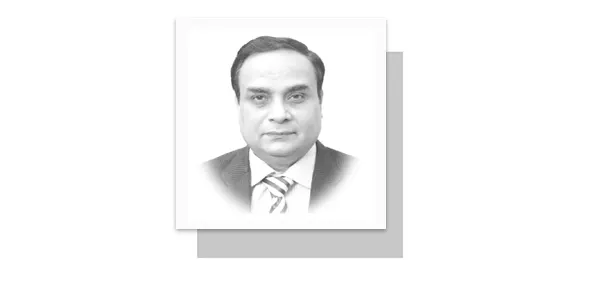THE Communist Party of China has entered into its 104th year vividly reflecting its strategic importance in terms of socio-economic stability, sustainability, social cohesion, political maturity and people’s friendly governance.
Thus Xi Jinping, General Secretary of the Communist Party of China (CPC) Central Committee and President of China stated “To understand China today, one must first understand the CPC is absolutely right.– The CPC struggle starting from 1921 with only 13 initial members to 100.27 million in 2024 has been remarkable, full of vision, productivity, prosperity, progress through participatory people, business and ecology’s friendly policies, programs and projects at gross root involving the local communities in the country.
The increase of 1.09 million members, 5.25 million primary organizations, increased by 74000 clearly demonstrating immense popularity of the CPC among the different segments of the society. Moreover, inclusion of 52.6% of members from production & work, 54.4 % diplomas of junior college or above, 83.7 % of having 35 years, 31 million of female’s members and last but not least, 7.7 % of ethnic minorities rightly highlighting political diversity, administrative functionality and immense institutionalization and positive channelization of multiculturalism and youth in the core of the CPC transforming its colors, wings and energies towards greater positivity and productivity. Truly it has become the oldest, biggest and most diversified political party in the world.
It is loud and clear that the CPC has succeeded to forge a revolutionary path with Chinese characteristics; the CPC led the Chinese people in founding the New China in 1949, uniting a fragmented country into a unified and enterprising human engineering. Its promotion of standardization of the spoken and written Chinese language and land revolution ensured that the people truly held real power, integrating the country, nation and state into one unified identity, which remained people centric from the top to bottom. Thus the formation of land financialization provided China a strategic financial cushion gearing massive infrastructure development in the country.
Its acceleration of agriculture, Industrial and services revolution built an integrated system further strengthening the state, market, society and of course civilization shattering the old Western liberal economic idea that government should act like a watchman, honest, silent, and preferably out of the way. Conversely, the CPC through massive infrastructure investments, nationwide nine-year compulsory education, and state-funded university programs, the government fostered talent, created demand, and built markets from scratch. Resultantly, China has become the world’s largest manufacturing hub having a complete industrial system. Moreover, its mega projects namely the BRI and CPEC have become the biggest projects of development, connectivity, productivity and prosperity around the globe.
It is absolutely true that the CPC is, at its core, a master of grand strategy: bold in vision, steadfast in purpose, and relentless in pursuit of its long-term blueprint. Its 15th Five-Year Plan is carrying forward the ongoing project of Chinese modernization through serving the people wholeheartedly” not as a slogan, but as a relay race that never ends, each runner passing the baton without pause. It is a good omen that unlike Western parties, which often compete and dispute over vested interests, commonly splitting into factions, protecting their own vested interests the CPC claims and maintains no private interests of its own showing a unique political model free from any personal gain, achievement and hidden agenda. Thus it has a new type of political entity, one woven into China’s unique civilizational fabric.
Obviously CPC has a holistic and comprehensive governance philosophy, strategy, and practice offering the world the concept of global shared prosperity promoting development, justice and rule of the law and further disseminating true essence of democracy mainly delivery, trust, respect, social justice, protection of basic human rights and last but not least provision of basic necessities of life without any discrimination, racism, hatred and bigotry.
It has established a new model of governance, policy, advocacy and national narrative full of efficiency, continuity, positivity and peaceful persuasion. It is indeed the first political party in the modern history of human civilization and political taught which introduced and implemented the concept of good governance, social responsibility, human resource development, organizational behavior theory, long term socio-economic planning, financial transparency, strategic communication skills, social entrepreneurship, women empowerment, community development, systematic soft imaging and national narrative through gross-rooted and consultative democracy in the country.
Evidently, the CPC maintains a consistent strategic vision allowing stable planning horizons and effective mobilization of national resources due to which it has achieved the biggest ratio of poverty eradication and social transformation in modern history. Hence massive infrastructure development and technological innovation has been achieved through sustained efforts over decades. Under the personal leadership and planning of President Xi, China’s decisive battle against extreme poverty has completed with unprecedented intensity, scale and results by setting long-term goals and consistently implementing, mobilizing resources across the country to achieve national objectives; ensure coordination across different levels of government and economic sectors; and maintain policy direction regardless of various challenges.
In summary, CPC has introduced and implemented the concept of “people-centeredness” acting as a methodological support for the entire governance system. Socialism and social economics have been driving forces of the CPC revolutionizing people’s lives and promoting community development. To conclude, the CPC and its leadership always expresses the interests of the whole society, while Western parties, entering into competition, inevitably articulate the interests of individual classes, regions, or lobbies. Thus, the CPC presents its model as more holistic and development-oriented, while the Western system, based on competitive multi-party politics, is now faced with deepening polarization and institutional blockages. The writer predicts a stable and prosperous China under the CPC gradually shifting from high-speed to high-quality economic growth: greater modernization self-reliance, a greener industrial mix, and a more balanced income structure in the country.
—The writer is President, Pak-China Corridor of Knowledge, Executive Director, CSAIS, regional expert: China, CPEC & BRI.
(mehmoodulhassankhan@yahoo.com)


















